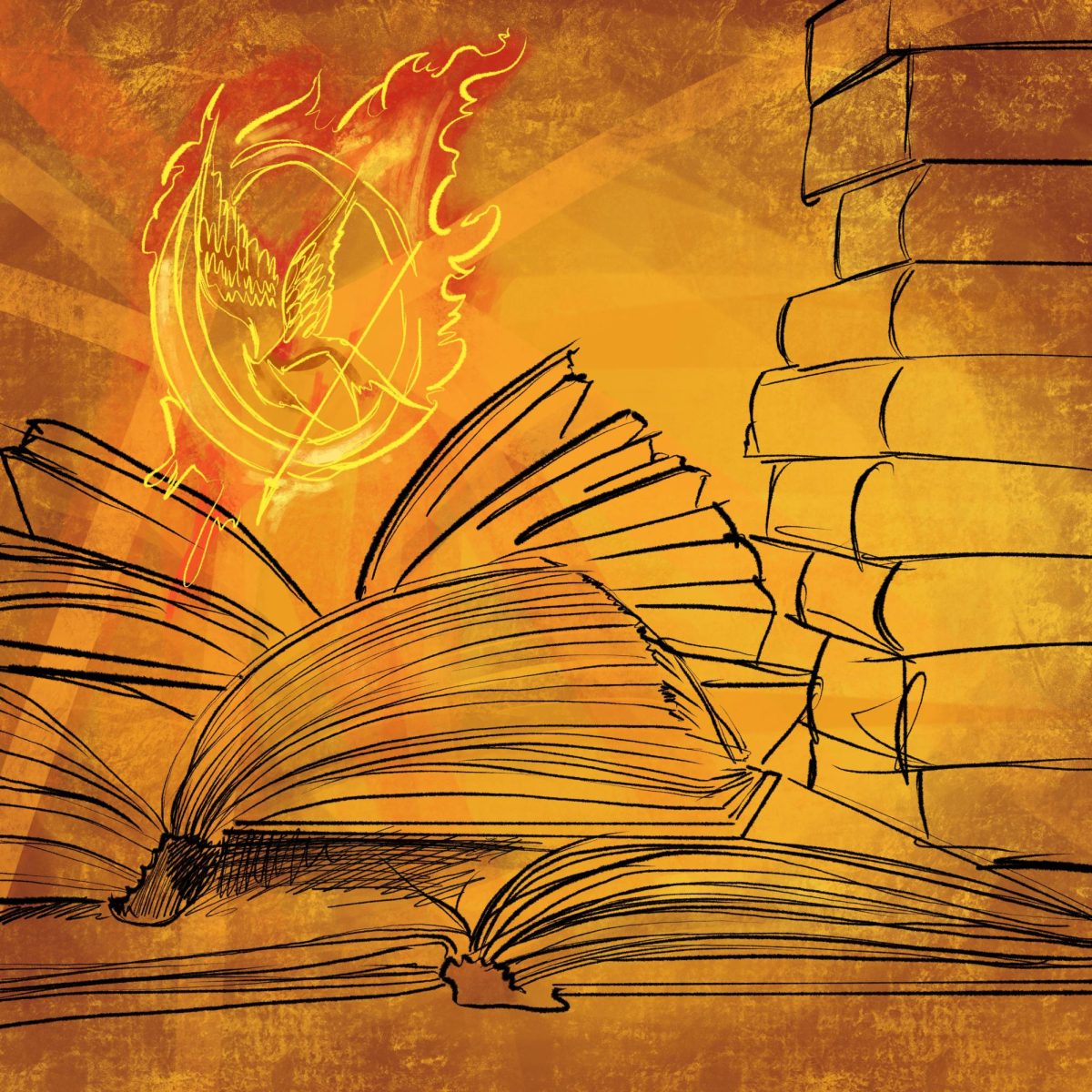When I first read “The Hunger Games” by Suzanne Collins, I was probably about 12. I enjoyed the series on a surface level, as I was caught up in the action and drama, but it didn’t stick with me heavily. Last year, for a literature class at Pitt — Representing Adolescence — we read the first book and analyzed it through the various lenses we had developed throughout the course. We looked at the political positionings, how Collins represented her young characters and how gender, race and disability factored into the story. As I reread it six years later, I realized the depth and mastery with which Collins crafted the story.
The entire series holds up in ways that other young-adult dystopian novels of the time — most of them just trying to capitalize on “The Hunger Games”’ fame — simply don’t. Collins is adept at building patterns and characters. In an interview with David Levithan about “The Ballad of Songbirds and Snakes,” she explains in depth how she references various philosophers, and how character names are influenced by poetry, music, Roman history and writing that coincide with their stories. The novels are teeming with high-level references, with the most recent “Sunrise on the Reaping” entwining heavily with writings from Edgar Allen Poe.
What many may not realize is that “The Hunger Games” is speculative fiction. Panem takes place in North America after climate disasters and global conflicts. Each district is spatially related to the industry it represents, and thus, the stories also function as warnings of what our future could look like. In each of the now five novels, Collins unpacks the threat of authoritarianism and the pitfalls faced by democracy. Propaganda takes center stage in the narrative conflicts, and wealth imbalances are critiqued mercilessly.
Yet perhaps most miraculous of all, these novels are compulsively readable. The chapters end on cliffhangers and the characters dance off the page. The first book is around 380 pages, and you could easily read it in a single sitting, even if you’re not a literary academic. Collins got her start writing for children’s TV, and her linguistic style is approachable to a vast variety of audiences. Where most books that reference Hobbesian philosophy or begin with a George Orwell quote carry themselves proudly above the general masses, this series remains incredibly accessible.
Of course, this intense accessibility is not always a strength. The internet is rife with misinterpretations of Collins’ work. People will entirely miss the point and talk about how fun it would be to watch the games or make sexy edits of Coriolanus Snow as a young man. A common sarcastic refrain is that her most recent novel, “Sunrise on the Reaping,” was actually written to remind us just how evil Snow is, despite being played by Tom Blyth in the films. The fandom becomes divided over whether or not Katniss really loved Peeta, and tone-deaf posts will declare they want to see a movie for every tribute.
Not only do the people saying and posting these things miss out on the benefits of deeper messaging, but they also could give an outsider the impression that these books are purely silly romance and exciting action. Not to say that romance or action are bad aspects of storytelling or inherently shallow — they are actually great strengths of this series — but it diminishes the story to think that it is only these things.
When I first read these books, I did not understand every single reference or deeply digest the delicate balance of how quickly rebellion can become a new authoritarianism, but who’s to say I didn’t absorb it on some level? Who’s to say that it didn’t inform how I would build my opinions on governance and subconsciously incite my anger at injustice? Even if people are missing half the points these books are making, they’re still getting some of them, and that’s better than nothing. This is why I strongly encourage the use of “The Hunger Games” in education.
Not only can it be utilized to teach general literary techniques, especially since Collins repeatedly utilizes the three-act structure — literally breaking all of her novels into three parts — but it can also be interpreted through almost any lens imaginable — war theory, gender, philosophy, nature, disability. Even aspects that go undeveloped like race or queer theory can still raise a whole host of questions and debate and important discussion. Obviously, don’t go showing these books to your 8-year-old — they’re certainly dark and violent in the ways that they need to be to effectively deliver their messaging, but that doesn’t mean they’re not important and valuable.
Mark my words, “The Hunger Games” will go down as a classic with books like “The Giver,” “1984” and “Fahrenheit 451.” It has already been banned in schools and libraries across the country. Clearly, there is information here that poses a threat to our current systems of power. If you take anything away from this opinion piece, it’s to go check out “The Hunger Games” from your local library. At the very least, you’ll spend a couple of hours consuming a heartbreaking story with engaging characters, but maybe you’ll walk away seeing things a little differently than before. Plus, once you’ve read the first book, you’ll simply have to read the rest.
Brynn Murawski hasn’t stopped thinking about “Sunrise on the Reaping” since she finished it. If you want to chat more about Panem and Hunger Games lore, she can be contacted at bmm185@pitt.edu



